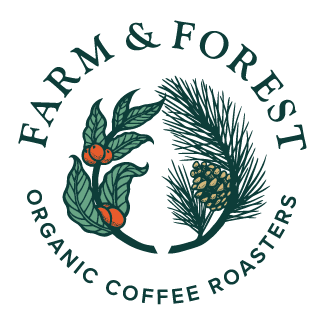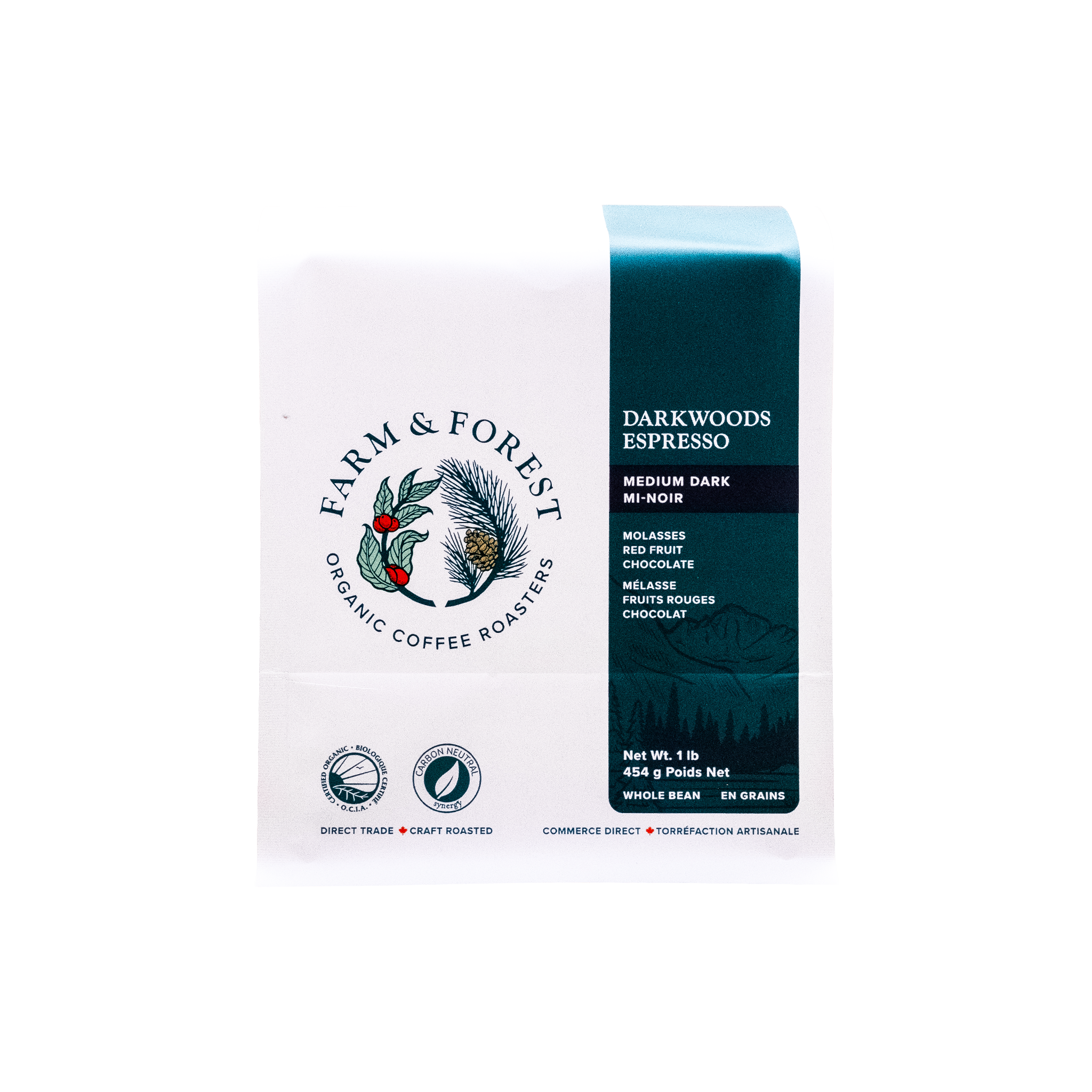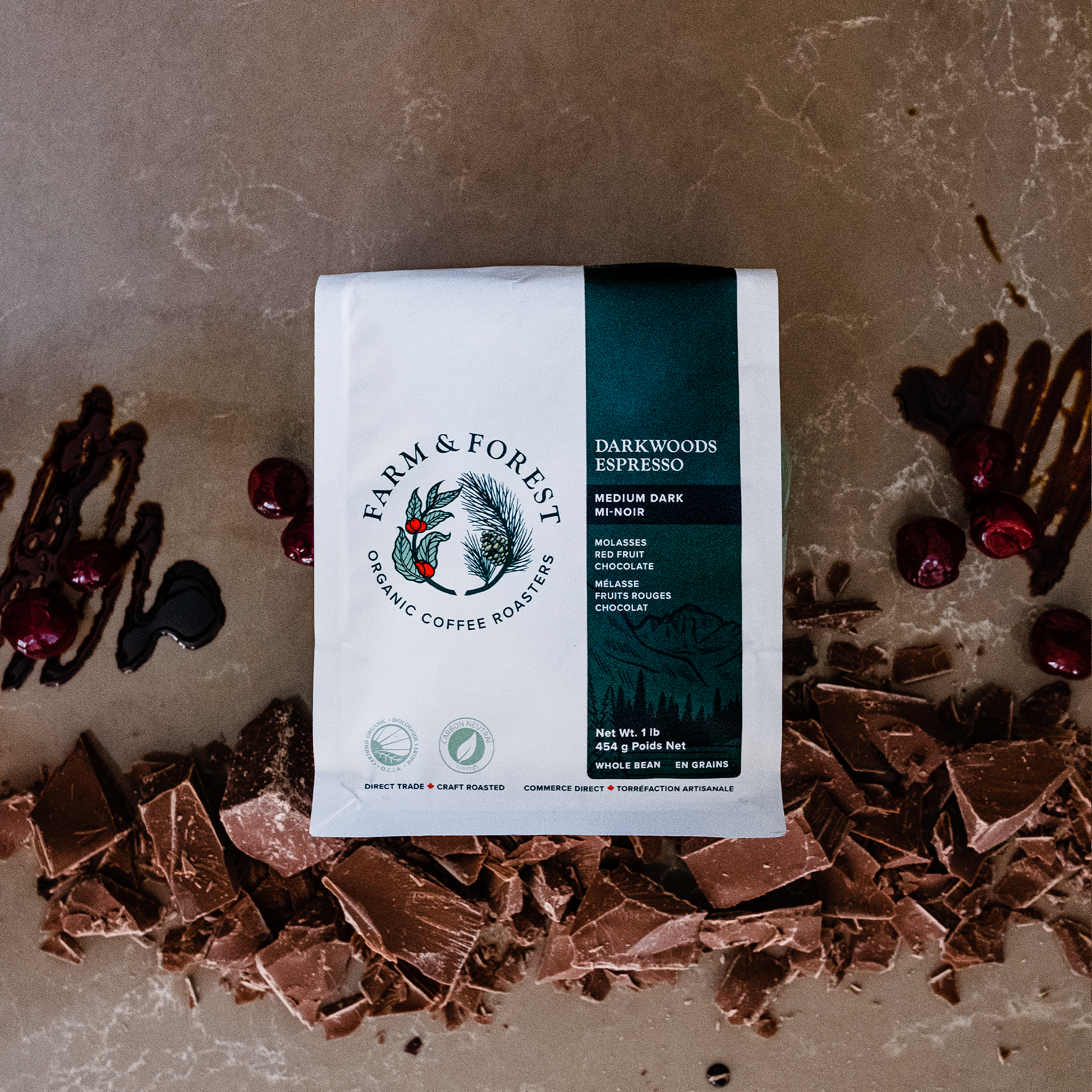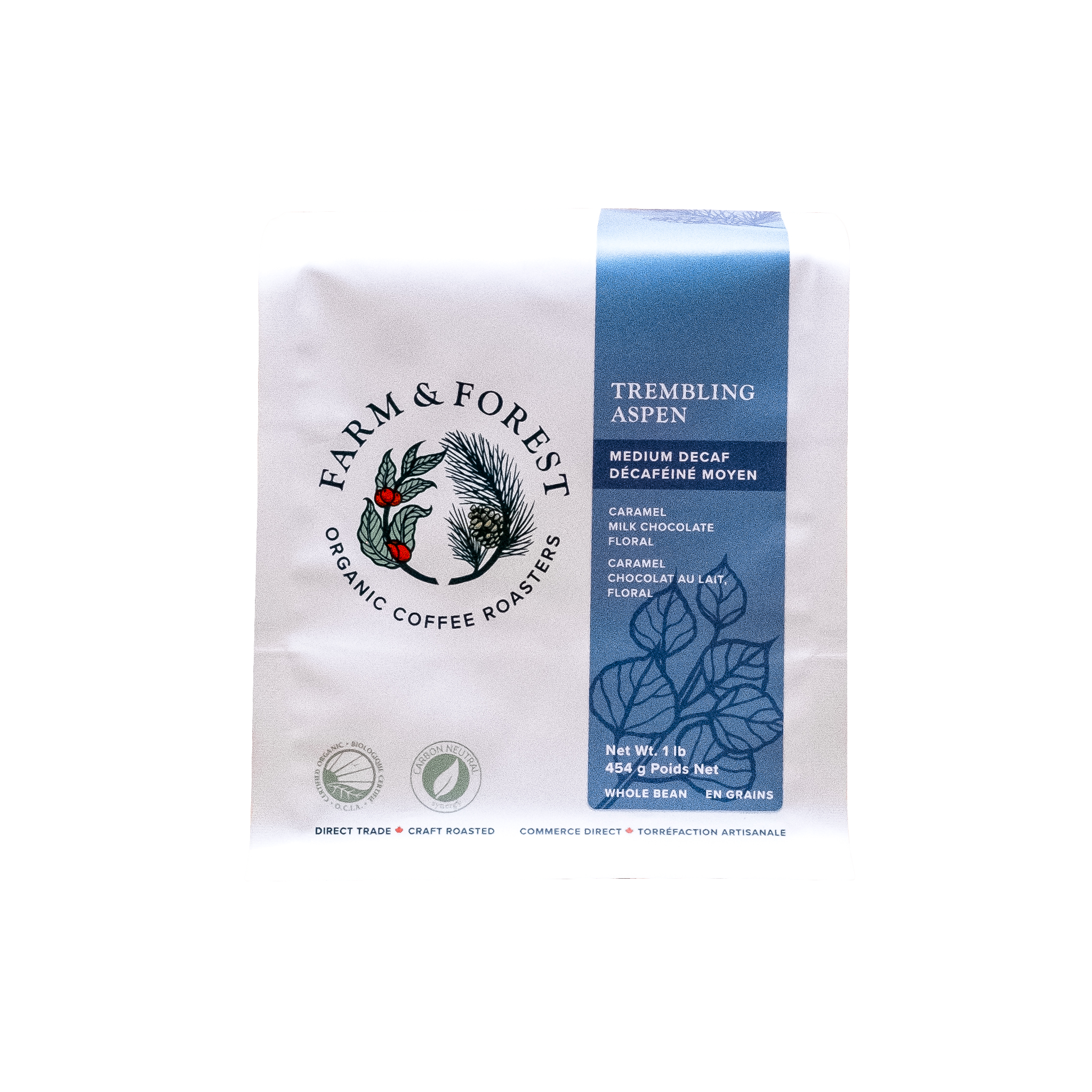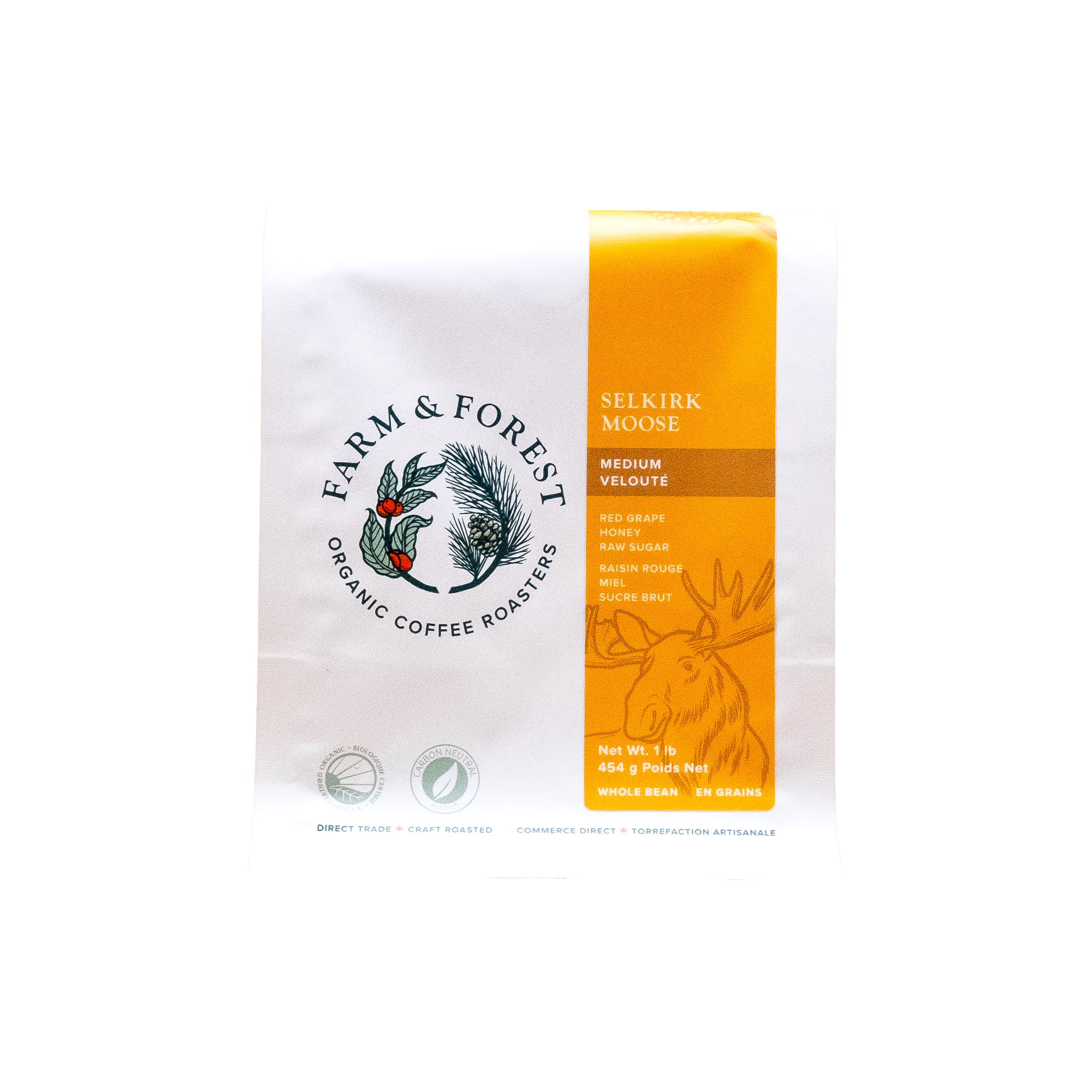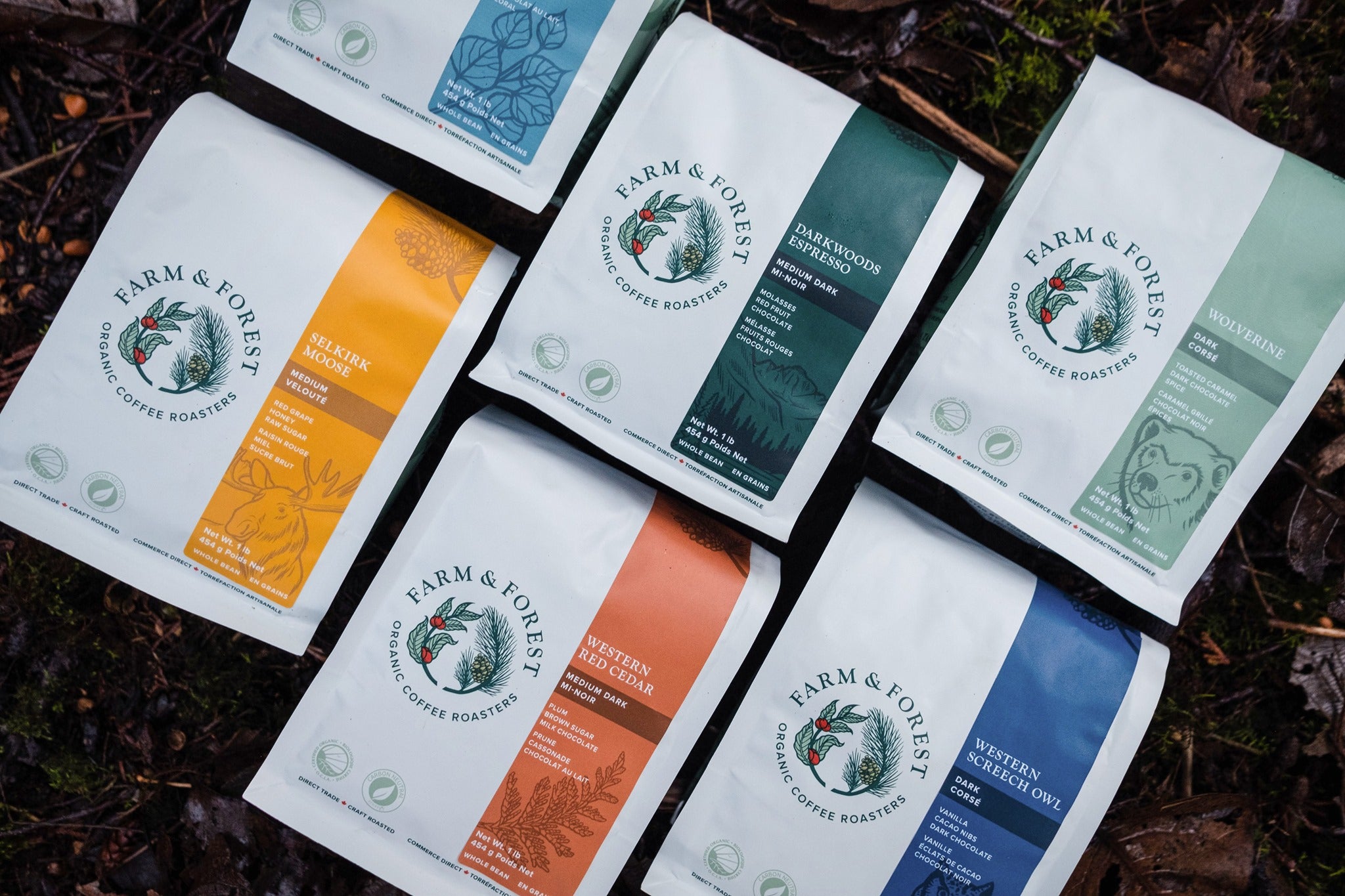Organic Western Red Cedar Coffee Profile
Historically, the bark of the Western Red Cedar has been used for many important staples, which is why we gave its name to our most versatile coffee.
For many of us, coffee is an essential part of our morning routine, setting the tone for the day ahead. Understanding and appreciating the coffee we drink is vital to ensure a great start to our day. In this article, we will explore everything you need to know about Farm & Forest Organic Red Cedar coffee, and how it contributes to the restoration of precious habitats. Discover the fascinating details behind this unique coffee and its positive impact on the environment and wildlife.
In this article, we’ll cover the following topics:
What does the Western Red Cedar taste like?
Organic Western Red Cedar Coffee attributes at a glance
Origins: Where does the Western Red Cedar Coffee come from?
Western Red Cedar Coffee processing methods
How is the Western Red Cedar Coffee roasted?
Western Red Cedar Coffee certifications
How does the Western Red Cedar Coffee protect nature?
What’s the best way to brew our Western Red Cedar Coffee?
FAQs about the Western Red Cedar Coffee
WHAT DOES THE WESTERN RED CEDAR COFFEE TASTE LIKE?
The Western Red Cedar Coffee has an immensely versatile flavour profile that reminds us of plum, brown sugar, and milk chocolate. The gentle, fruity acidity and light sweetness adds just enough sparkle to the creamy cocoa undertones, culminating in a cup that’s delicious on its own or with milk. This is definitely a crowd-pleaser!
We like taking this coffee with us whenever we travel or escape into nature with friends and family, since its highly approachable profile has something for every coffee-lover. It pairs well with a wide range of foods, but we especially enjoy it with stone fruit, seedy crackers, French toast, and almost any kind of cookie.
ORGANIC WESTERN RED CEDAR COFFEE ATTRIBUTES AT A GLANCE
Certifications: OCIA Certified Organic, Direct Trade, Carbon Neutral
Growing Regions: Huehuetenango, Guatemala | Aceh, Sumatra | Cajamarca, Peru | Limmu, Ethiopia
Process: fully washed | wet-hulled | raised beds
Altitude: 1500-2200 MASL
Roast Level: medium roast
ORIGINS: WHERE DOES THE WESTERN RED CEDAR COFFEE COME FROM?
Here at Farm & Forest, we source all our coffees directly from organic farms in the world’s finest growing regions. Our Western Red Cedar Coffee is a mix of specialty-grade (rated 80 or above on a 100-point scale) organic coffees from producers in Guatemala, Sumatra, Peru, and Ethiopia whose cultivation and processing practices are sustainable for both the local ecosystem and the community.
COFFEE BEANS FROM GUATEMALA
The combination of unique growing conditions and long-established farming practices makes Guatemalan coffee an industry favourite. Roasters and other coffee professionals seek out these valuable beans for their rich and complex flavour profile, the result of careful cultivation in a diverse range of microclimates, volcanic soil, and high altitudes. Producers in Guatemala favor shade-grown methods, harvesting and sorting by hand, and traditional processing methods, all of which contribute to the coffee’s exceptional quality. Guatemalan coffee plays a crucial role in the country's economy, providing livelihoods for numerous farmers and contributing significantly to the nation's export revenue, making it a valuable asset for both coffee enthusiasts and the Guatemalan people alike.
COFFEE BEANS FROM SUMATRA
The Indonesian island of Sumatra, with its volcanic soils and lush climate, is an ideal coffee-growing region. The country is known for its traditional wet-hulling process, or Giling Basah (more on wet-hulling below) which contributes to the full-bodied, distinctive flavour profile of the coffee. The uniquely earthy, spicy, and herbaceous notes are especially pronounced in coffees that have been farmed organically, as the producers opt for natural and more traditional practices over the use of synthetic chemicals and pesticides. The result is an environmentally sustainable and highly sought-after coffee with nuance and complexity.
COFFEE BEANS FROM PERU
In Peru, amid verdant geographic and climatic conditions, coffee cherries grown on high-altitude farms (such as those in the Andes) mature more slowly, allowing flavours to develop with exceptional depth and complexity — even more so when the coffee is grown organically. The biodiversity promoted by farms free from pesticides contributes to the distinct and vibrant taste profiles of the coffee and other nearby crops. That’s why specialty coffee enthusiasts are so drawn to organic Peruvian coffee and its pleasant acidity, smooth body, and well-balanced flavour.
COFFEE BEANS FROM ETHIOPIA
Organic coffee farming in Ethiopia holds great appeal for specialty coffee lovers due to its ancient traditions and biodynamic systems. Widely considered to be the birthplace of coffee, Ethiopia has a rich history of coffee cultivation — long-established methods have been passed down through generations, fostering a deep-rooted connection to the land and its cultural significance. The emphasis on traditional, chemical-free farming allows the coffee plants to grow in harmony with the natural ecosystem, preserving the soil’s fertility and maintaining ecological balance while also producing beans with exquisite flavour profiles.
WESTERN RED CEDAR COFFEE PROCESSING METHODS
The delicious flavour and texture of our Western Red Cedar Coffee come not only from its natural terroir, but also from meticulous post-harvest processing. This essential stage in the bean-to-cup journey can significantly impact the overall quality of the end result. That’s why we are so selective of our producing partners at origin, who handle these processes with utmost care. Let’s explore these processing methods now:
FULLY WASHED
Fully washed coffee has been completely de-pulped after harvest, so that the flesh of the coffee cherry has been entirely removed from the seed inside before fermentation. At the end of the fermentation period (typically 24 to 48 hours), the beans are washed with water to remove any remaining mucilage (or pulp) and dried under the sun or in mechanical dryers. This method of processing yields a consistently clean, bright, and consistent flavour profile prized by many roasters and coffee-drinkers.
Wet-Hulled
The wet-hulled coffee processing method, also known as "Giling Basah," originated in Sumatra, though it is now used throughout Indonesia and even experimentally in other countries. After harvesting, the coffee cherries' outer skin is removed, and the beans, still encased in their parchment layer, undergo a partial drying process. At this point, the beans are still high in moisture content, typically around 30%.
Next comes the wet-hulling, wherein the protective parchment layer is mechanically removed while the beans are still damp. Then the beans are dried further until they reach the desired moisture content of 11-12%. Coffee processed in this way has a distinct flavour profile characterized by a full-bodied, earthy, and sometimes rustic taste with low acidity.
Raised Beds
Our producing partners in Ethiopia use raised beds, also known as African drying beds, as a cost-effective way to improve coffee quality and enhance its flavour. After the cherries are harvested, the pulp is removed and the seeds are laid out to dry on elevated surfaces, usually made of mesh or wooden slats. One advantage to this method is that the beds promote air circulation, allowing the beans to dry evenly without encouraging the growth of mold. Raised beds also permit producers greater control over the drying process, making it easier to prevent over-drying and achieve a consistent taste profile.
HOW IS THE WESTERN RED CEDAR COFFEE ROASTED?
We roast our Western Red Cedar Coffee at our carbon-neutral facility in Delta, BC. Our goal in creating this particular coffee was to create a blend with a versatile flavour profile that could be brewed and enjoyed in many different ways.
To do so, we carefully roast the beans until just before the second crack (the second point in the roasting process at which a series of popping sounds can be heard, as the cell walls swell and release steam). That way, the sugars caramelize just enough while accentuating the coffee’s terroir.
The beans then tumble into the cooling tray, where the Maillard reaction ends and the degassing begins. The coffee will continue releasing carbon dioxide long after it cools, so we bag it up and seal in the flavour right away to ensure it has rested only just enough by the time it’s brewed.
WESTERN RED CEDAR COFFEE CERTIFICATIONS
We care just as much about where our coffee comes from and how it gets here as we do about how it tastes. That’s why we’re proud to work with globally recognized institutions to ensure our coffee has a positive impact on both people and the planet. Here are the certifications granted to our Farm & Forest Organic Western Red Cedar Coffee from such institutions:
OCIA CERTIFIED ORGANIC
OCIA International, or the Organic Crop Improvement Association International, stands as a globally renowned non-profit entity devoted to certifying and endorsing organic agricultural practices. Dedicated to sustainable farming and environmental stewardship, OCIA International plays a pivotal role in upholding the authenticity and integrity of organic products worldwide. Through its rigorous certification processes and support for organic farmers, OCIA International remains at the forefront of the organic industry, fostering consumer confidence and facilitating the expansion of organic agriculture on a global scale.
The OCIA Certified Organic criteria ensure that no chemical or non-natural fertilizer applications have been utilized on fields for a minimum of three years prior to harvesting. Each qualifying farm undergoes annual inspections conducted by impartial inspectors and is subject to surprise inspections at any time. Thorough records of each farm's practices and processes are meticulously maintained and submitted for an annual certification review. With this certification, we can confidently guarantee that every bag of Farm & Forest Western Red Cedar Coffee is free from pesticides, all-natural, sustainably grown, and top quality.
CARBON NEUTRAL
Each year Farm & Forest collaborates with Synergy Enterprises, a local organization specialized in mapping and adjusting processes, to reduce our net global greenhouse gas output. We take our environmental responsibility seriously, and Synergy helps us maintain carbon neutrality by comprehensively measuring our total emissions (including shipping and green coffee imports) and energy consumption (usage at our facility as well as fuel for delivery vehicles). With the right numbers in hand, we offset our emissions by purchasing verified Carbon Credits.
DIRECT TRADE
While a direct trade certification does not yet exist, we feel so strongly about our commitment to working closely with our producing partners that we’ve included it here and on each bag of Organic Western Red Cedar Coffee.
Direct trade coffee offers numerous advantages that make it a better choice for consumers, farmers, and the environment. Direct trade practices ensure that coffee farmers receive fair compensation for their hard work and dedication by eliminating the middleman, empowering farmers to earn a decent income, and providing them with better living conditions.
The resulting stability enhances the overall well-being of coffee-growing communities, fostering sustainable development and reducing poverty.
By choosing direct trade coffee, you not only support responsible environmental stewardship but also contribute to the preservation of delicate ecosystems in coffee-producing regions, participating in a global movement that promotes social justice, ethical trading practices, and environmental sustainability.
HOW DOES THE WESTERN RED CEDAR COFFEE PROTECT NATURE?
For every pound of Western Red Cedar Coffee sold, we donate 15 cents to the Nature Conservancy of Canada, which has helped conserve 14 million hectares of critical habitat since 1962. The donation goes towards the protection of forests like the Darkwoods Conservation Area in southeastern BC, where species like the Western Red Cedar can thrive.
Darkwoods is a breathtaking wilderness landscape that plays a central role in a network of parks and wildlife management areas — 1,100 square kilometres of forest where animals can roam freely.
WHAT'S THE BEST WAY TO BREW OUR ORGANIC WESTERN RED CEDAR COFFEE?
We recommend brewing the Western Red Cedar Coffee with a pour over dripper or a French Press (but a Chemex works well, too!). Here’s our tried-and-true pour over method:
Organic Western Red Cedar Coffee Pour Over Recipe
We use a 1:16 coffee-to-water ratio here, but you can tighten it up to 1:15 for more texture and acidity, or increase it to 1:18 to enhance subtleties and lighten the body.
You will need:
- Pour over dripper (ideally ceramic)
- Paper filter
- Kettle (gooseneck, if possible, for precision)
- Grinder (burr, if possible)
- Scale (digital, in grams, if possible)
- Timer
- Serving vessel
- 25g Western Red Cedar coffee
- 400g water (195-200°F) plus extra for preheating
Step 1
Bring the water to a boil. Place the filter inside the dripper and wet it with some of the water from the kettle. Add more water to the serving vessel to preheat it. If you can, set the temperature on your kettle to hold at 195-200°F.
Step 2
Grind the coffee on a medium setting so the particles resemble sand. Discard the hot water from the vessel, place it on the scale, and set the filter-lined dripper on top.
Step 3
Add the ground coffee to the filter and tare the scale to zero. Start the timer and pour 50g of hot water over the grounds in a circular motion, ensuring all the grounds are saturated.
Step 4
Allow the coffee to bloom (swell like a mushroom cloud as the carbon dioxide escapes) for 30 seconds.
Step 5
Begin pouring the water again in a circular motion, starting in the middle and working your way outward until the dripper is half-full. Pause to allow the water to pass through, then continue adding water slowly in the same fashion until the scale reads 400g. The total brew time should be around 2:45 to 3:00 minutes.
Step 6
Once all the water has passed through the grounds, remove the dripper and compost the coffee-filled filter. Gently swirl the finished brew in the serving vessel and enjoy when it cools to your desired drinking temperature.
FAQS ABOUT THE WESTERN RED CEDAR COFFEE
Where can I buy Organic Western Red Cedar Coffee?
Our list of retail partners across BC is growing! But the easiest way to find and purchase our Western Red Cedar Coffee is on our website, farmandforestcoffee.com. The beans are available in one-pound and five-pound bags, and we’ll even grind them for you — simply select your preferred brew method during checkout.
How long will my bag of Western Red Cedar Coffee stay fresh?
We bag, seal, and ship our Western Red Cedar Coffee right after roasting so that the beans are perfectly rested when they reach your door. Whole bean coffee is best enjoyed within 21 days of roasting; ground coffee should be used within 1 week.
How can I keep the Western Red Cedar Coffee fresh for longer?
Our Western Red Cedar Coffee beans stay fresh when protected from oxygen, light, and heat. So the best way to store them is in an airtight, opaque container in a cool room. If you don’t think you’ll make it through the whole bag in 4 weeks, you can seal the beans (a vacuum-sealer works best) and freeze them — some of our customers have reported great results from beans frozen for as many as 9 months.
Can I make espresso with the Western Red Cedar Coffee?
Yes, our Western Red Cedar Coffee makes a lovely medium-roast espresso! Brewed in that fashion, the milk chocolate notes come to the fore and the plummy acidity enlivens the shot. Because of its medium roast profile, we like to serve it with equal parts steamed milk (like a cortado) to bring out the sweetness and soften the acidity.
What pairs well with the Western Red Cedar Coffee?
The fruity notes and creamy texture of the Western Red Cedar Coffee pair well with most foods, especially as it has such gentle acidity. We love it with our morning oats, a handful of trail mix on a hike, slices of sharp cheddar on crackers, and s’mores by the campfire.
What can I do with my spent Western Red Cedar Coffee grounds?
We’re all about zero waste here at Farm & Forest Coffee, so we put our spent coffee grounds in the compost, or sprinkle it over our garden beds. We’ve also used the grounds to scrub tough spots off pots and pans (but don’t try this on non-stick surfaces!). Other inventive uses include body scrubs, flea deterrent, mushroom cultivation, and odour neutralizers.
Can I sign up for a Western Red Cedar Coffee subscription?
Yes! We offer weekly and monthly subscriptions for our Organic Western Red Cedar Coffee — plus you save 5% on each bag! Choose the “SUBSCRIBE & SAVE” option when you shop our Western Red Cedar Coffee or learn more about our subscriptions here.
Where can I learn more about how the Western Red Cedar Coffee supports wildlife conservation?
Find more details about our partnership with the Nature Conservancy of Canada, and how every bag of our Organic Western Red Cedar Coffee supports wildlife conservation projects in Canada, here on our website. Visit natureconservancy.ca to learn all about the species our Organic Western Red Cedar Coffee helps protect!
